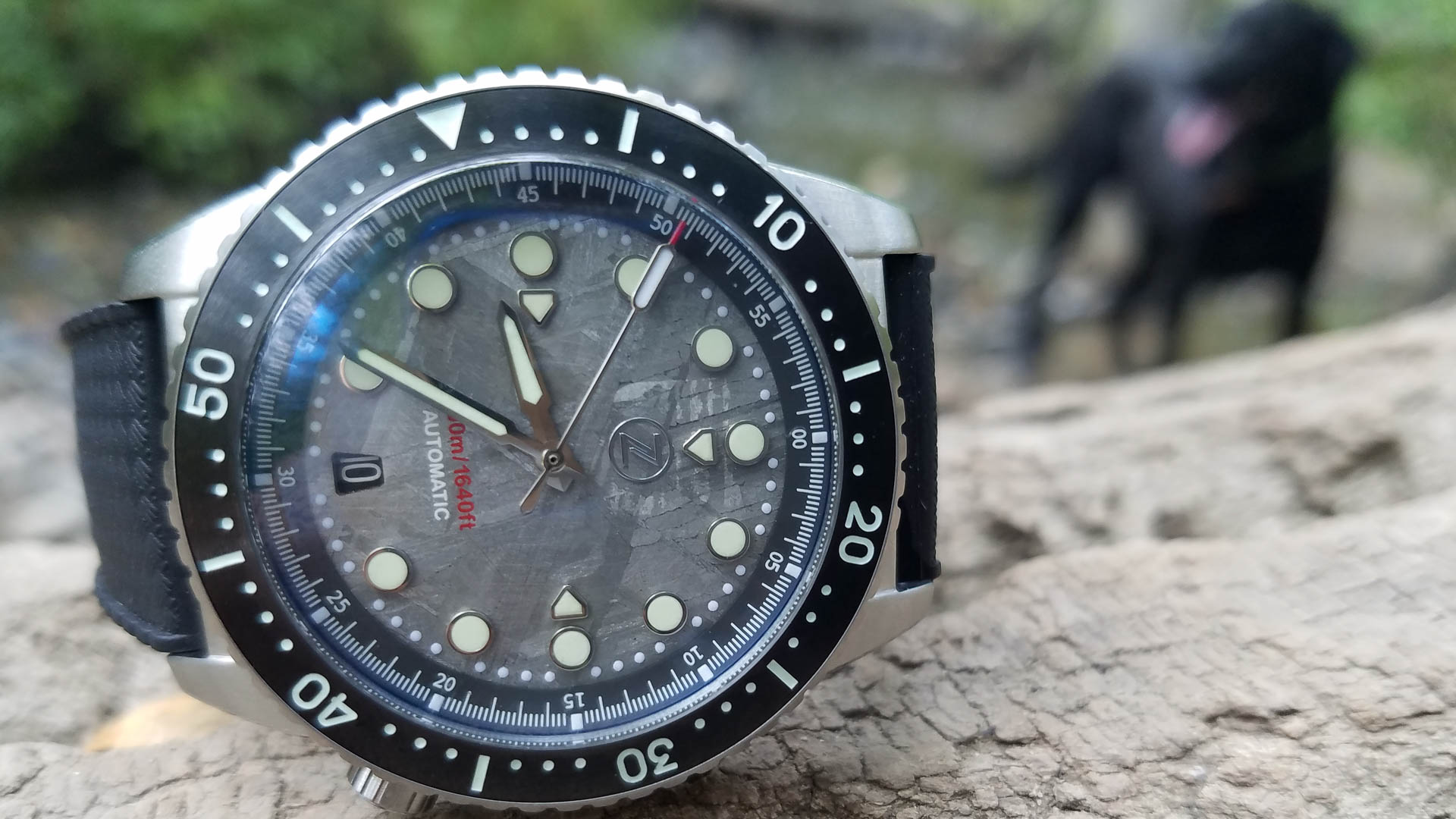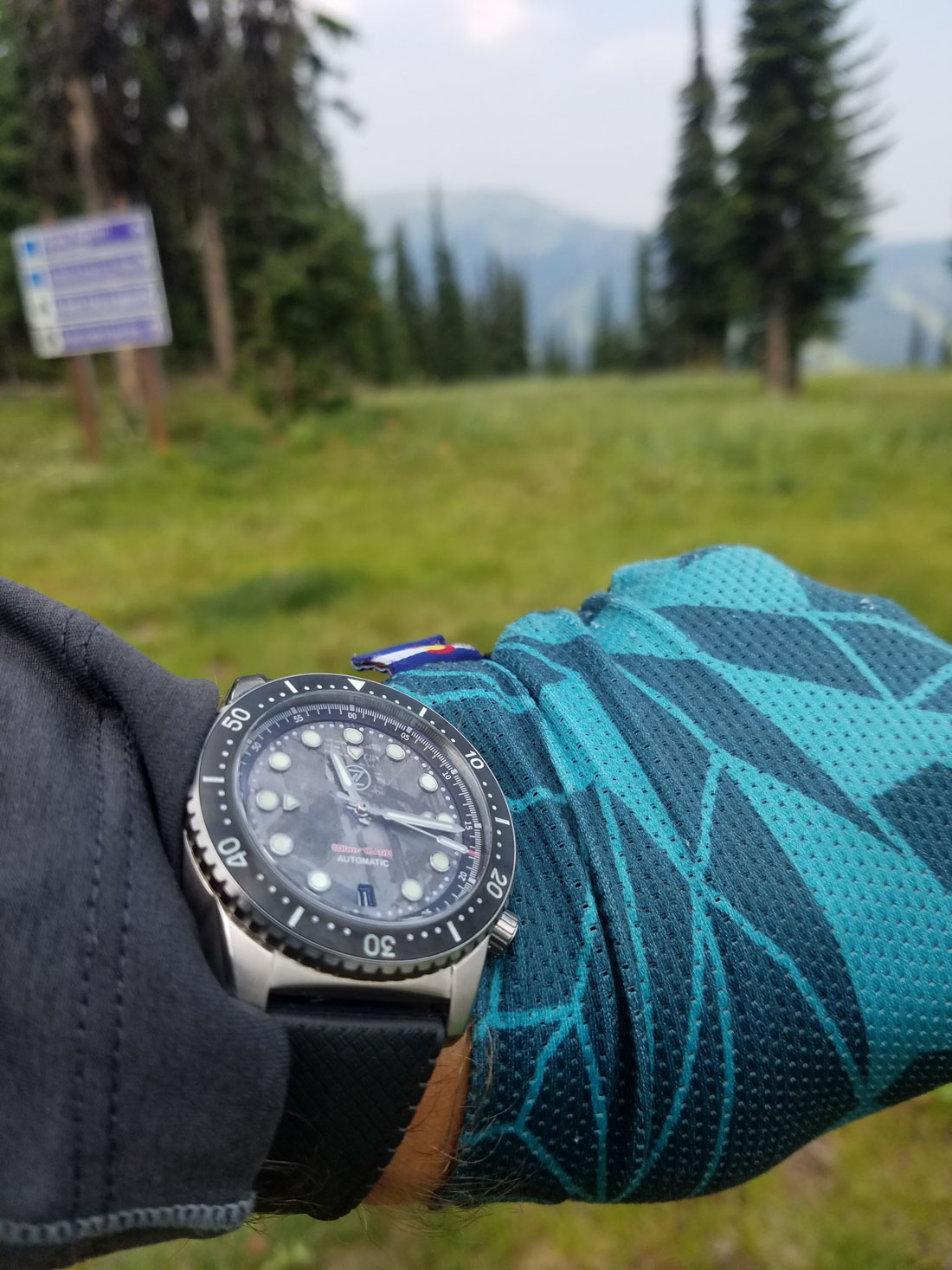 In May of 2018, the monthly giveaway watch on aBlogtoWatch was a Zelos Mako Bronze 500m watch. The winner was Matt Reudink from British Columbia and after enjoying his new timepiece (retail price $429-$569), he has given a watch winner review for us to share with you – the aBlogtoWatch audience. Thanks to Matt and all the other watch winners who share their experiences with the world. Here is Matt’s review:
In May of 2018, the monthly giveaway watch on aBlogtoWatch was a Zelos Mako Bronze 500m watch. The winner was Matt Reudink from British Columbia and after enjoying his new timepiece (retail price $429-$569), he has given a watch winner review for us to share with you – the aBlogtoWatch audience. Thanks to Matt and all the other watch winners who share their experiences with the world. Here is Matt’s review:
This review begins not in the North Atlantic waters off the picturesque coast of Nova Scotia, as was the original plan, but rather in the mercurial ether somewhere between Hong Kong and Cincinnati. Alas this appears to be the horological netherworld into which my bronze Zelos Mako with meteorite dial vanished. The shipping gods are fickle; they aligned against me and the original watch shipped from Singapore, the headquarters of Elshan Tang and Zelos, was lost in transit on its way to Canada. Sadly, these things do happen and being that this was a free giveaway, Elshan had absolutely no obligation to send more than his condolences.
However, this is where I experienced the exceptional customer service for which Elshan and Zelos have been widely lauded. Elshan’s immediate response was to send a replacement of my choosing. Sadly (for me), that particular bronze model with the lovely meteorite dial currently in shipping limbo was the last of the bunch. Zelos is a small company and makes limited numbers of each model and the Mako was a hit. I was torn. Go with a blue-dialed bronze, a case material I’ve long admired but never owned, or go with the stunning and unique meteorite dial with a steel case? I decided to go with meteorite because…come on, it’s meteorite! It’s from freaking outer space! My 6-year-old self would be way too disappointed in the adult me if I didn’t go with meteorite. I confirmed this by asking my 5 and 7-year-old kids – no contest, when given a choice you go with the space rock.
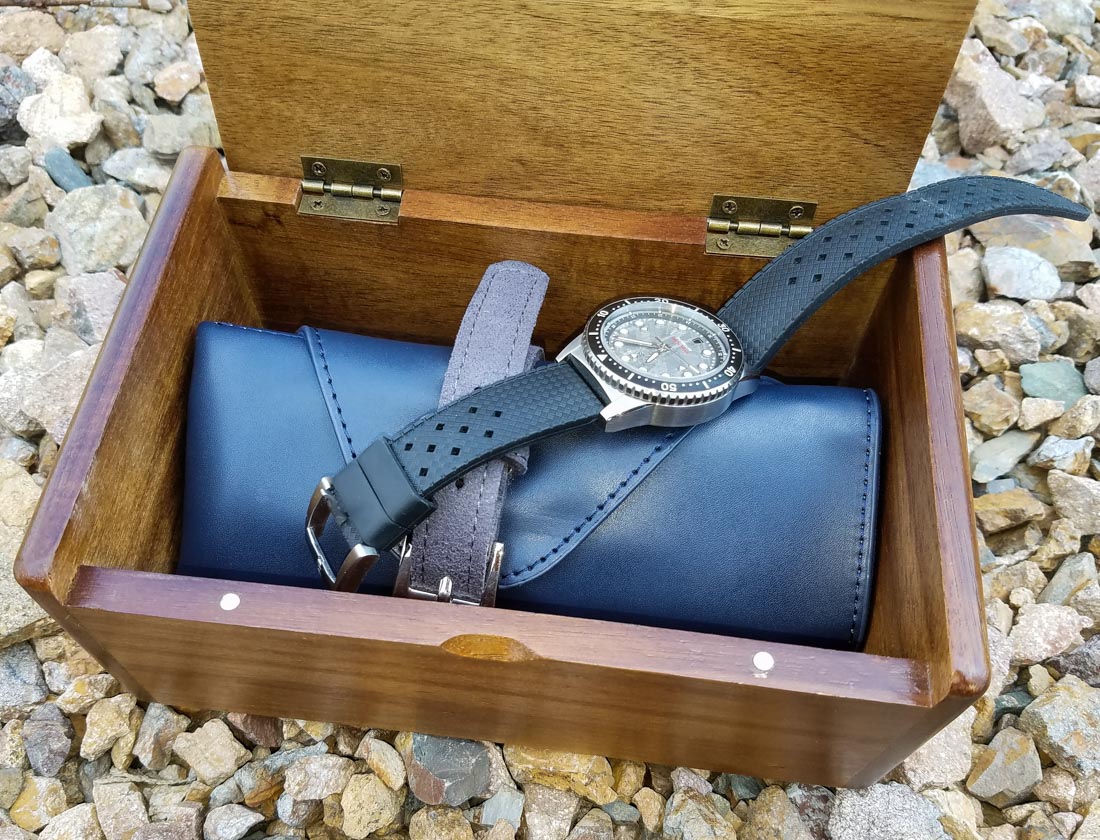
On to the watch itself. Many reviews focus on value propositions, spec lists, and “bang for the buck.” But to me, none of that really matters if the watch doesn’t resonate. And I’m buzzing with this one. That doesn’t mean that the Mako’s style will resonate with everyone and I don’t think that’s Elshan’s goal with the Mako or any of his other watches. Look through Zelos’ catalog and you’ll see a selection of unique materials like bronze cases, Damascus steel bezels, meteorite dials, dials made from an SR-71 blackbird, and even a timascus (titanium Damascus) case. You’ll also find a unique design language that’s all Elshan. Zelos doesn’t cater to the lowest common denominator; they could certainly pump out another sub homage that would sell like crazy, but Zelos isn’t that kind of brand. These are bold, unique watches. They will appeal to you or they won’t, but they certainly won’t bore you.
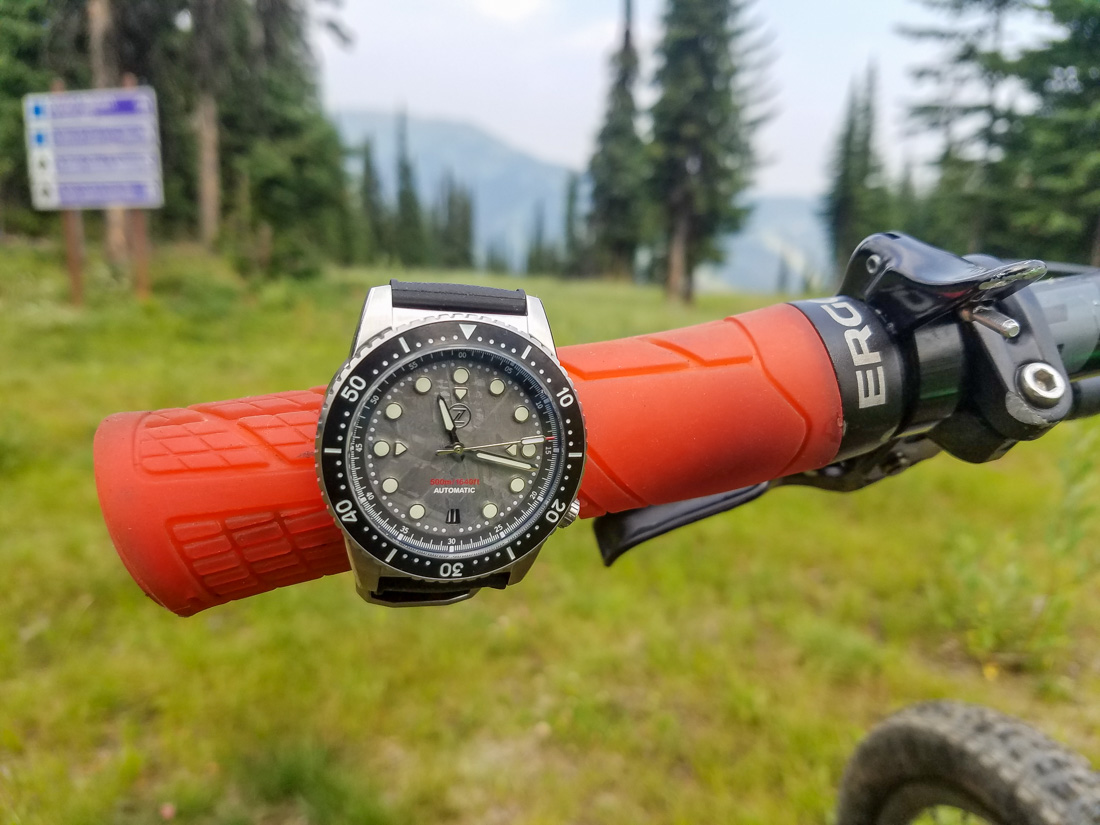
Case
The brushed stainless steel case of the Zelos Mako measures 40mm, with a 46mm lug-to-lug length. This hits the absolute sweet spot on my 6.75” wrist. The lugs are nicely curved, with some unexpected polishing on the beveled edges of the lugs. Add to this nicely finished package a crown at 4 o’clock and you have an instantly comfortable, wearable watch that has a case style reminiscent of the classic Seiko 62MAS. The only thing detracting slightly from overall wearability is the height, measuring at 13.5mm not including the double-domed sapphire crystal, and 15.5mm with. It’s a tall watch, but not ungainly and because, thankfully, I’m not cursed with having to wear a suit outside weddings and funerals, things like the ability to slip under a cuff aren’t a concern.
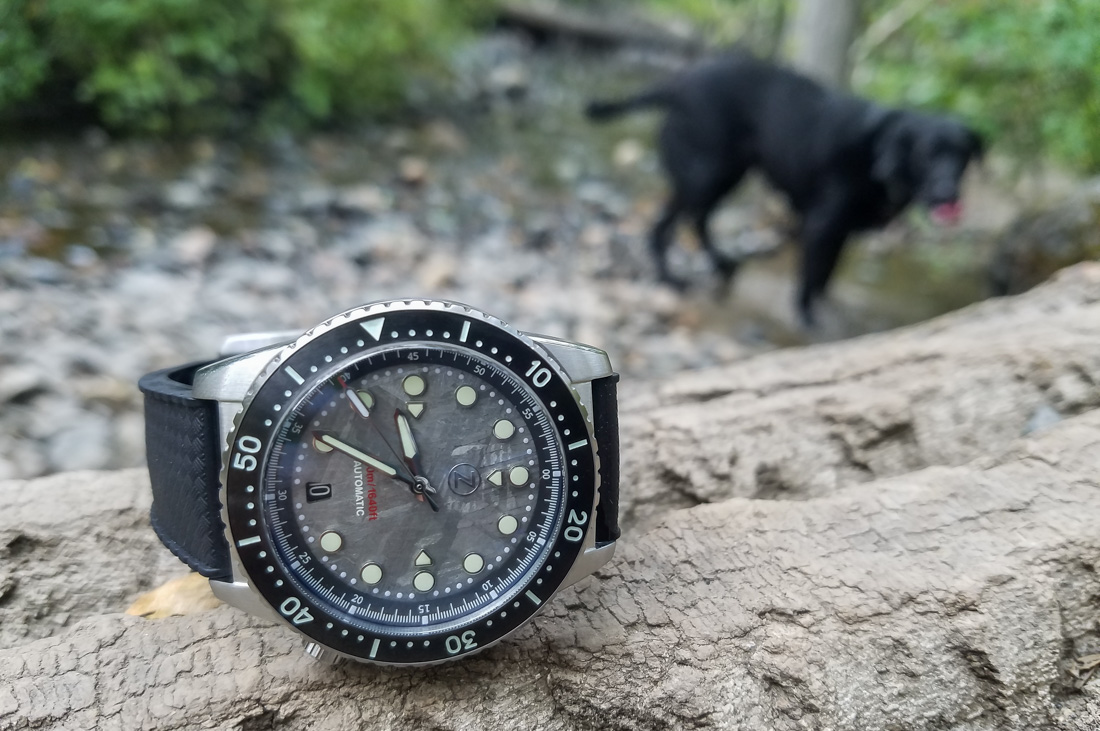
If you’re an unfortunate suit-wearing soul – first, my condolences – second, I have no idea if it would work for you practically or stylistically. Consult your local fashionista. Ultimately this is a casual dive watch best suited for fun and adventure, aquatic or otherwise. Note that although the model I’m reviewing is the stainless steel case, the bronze Mako has an identical case shape with a stainless caseback. Speaking of which, on the caseback is a clean engraving of the eponymous Mako, a streamlined shark famed for its unrivaled speed, owning the record of the world’s fastest swimming shark. On a fun note, the name Mako comes from the Maori language.
One aspect of the case that has been criticized is the relatively small crown. True, the crown is a bit small, but then again, I don’t keep a large collection and don’t rotate watches constantly, resulting in having to frequently set the time and date. For general day-to-day use, it’s perfectly fine and I’d much prefer it to an oversized crown that could dig in and cause discomfort.
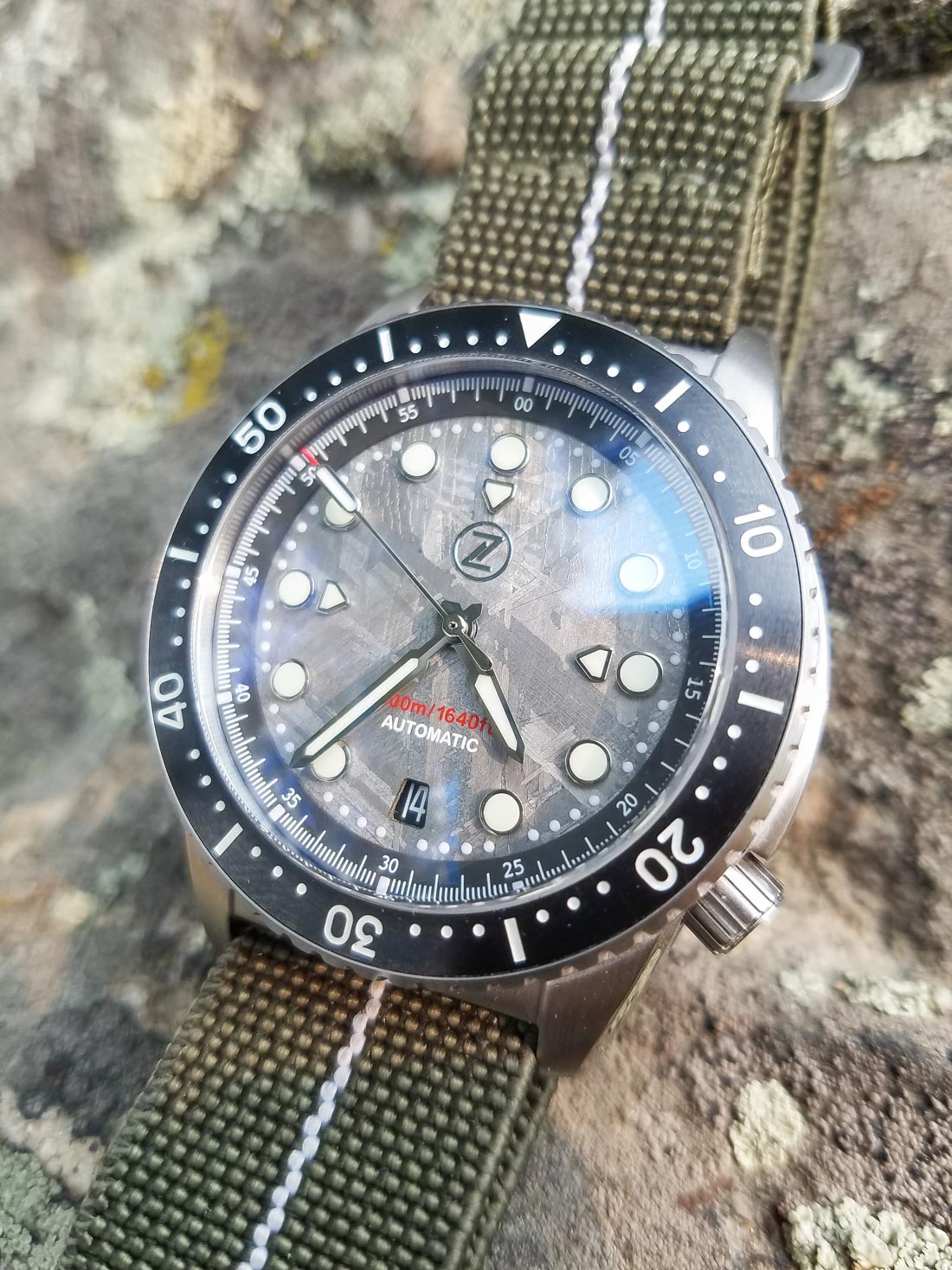
The watch is rated to an impressive 500m, so the height is certainly in line with other divers with this amount of water resistance (e.g., Tudor Pelagos). One thing I commend Zelos for is having the restraint not to include a helium escape valve. In my eyes this is an unnecessary potential failure point and relevant to so few people in the world, it’s rather bizarre how ubiquitous it has become. How many saturation divers could there possibly be in the world? (Note: according to Federal Register, there are 366 commercial saturation divers in the US…so, not a large market.)
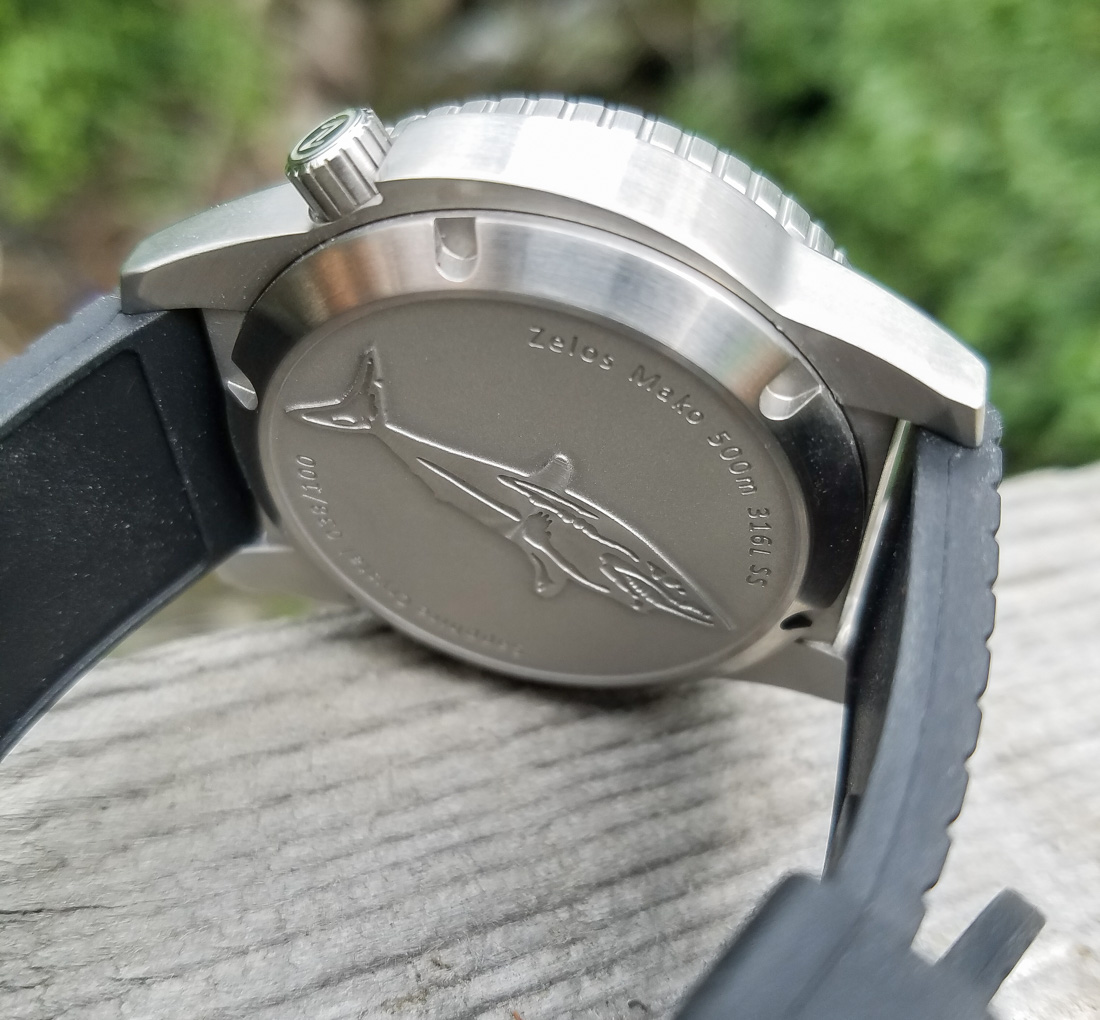
Movement
Methodically ticking away inside the Mako is a Swiss-made Sellita SW-200, a clone of the ubiquitous ETA 2824-2. It’s a 28,000 bph movement with hacking seconds, 38-hour power reserve, and date function. Reliable, easily serviceable, and certainly welcome at this price. Over two weeks of constant wear I was at -5, so an outstanding -0.3sec/day.
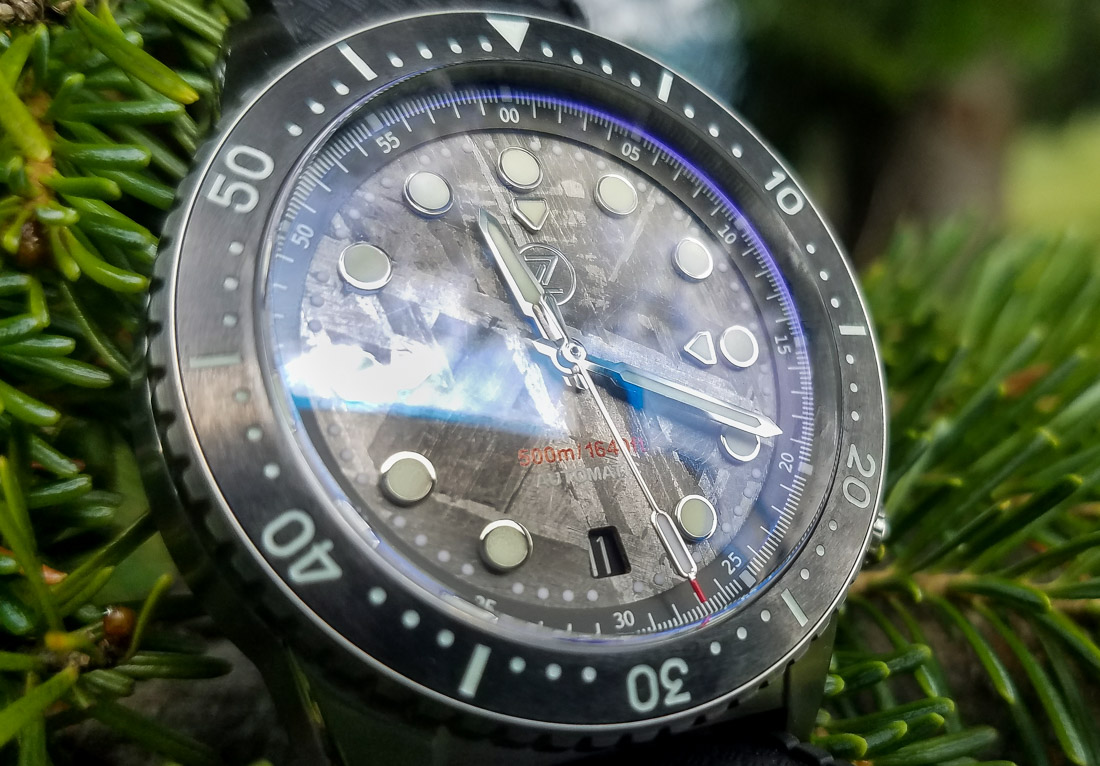
Dial
Roughly 4.6 billion years ago during the aptly named Hadean eon, our primordial earth was a hellish landscape which had just coalesced from a seething mass of gas and dust (picture the Balrog of Khazad-dûm). Radioactive elements were in fast decay and other shorter-lived planetary bodies collided with the earth, sending fragments scattering through space, some even uniting to form the moon. We were lucky; the earth survived. Elsewhere in our solar system, other planets were quickening, and these mind-bogglingly intense planetary collisions were flinging fragments of rock into the vacuum of space. Over the next ten million years as these asteroids cooled in their early celestial genesis, kamacite precipitated and grew in a crystalline lattice within the iron, forming the irreproducible and extraterrestrially-distinct Widmanstätten pattern. As the next several billion years passed, the asteroids accumulated in a circumstellar disc between the orbits of Mars and Jupiter, forming the asteroid belt in the outer solar system. But Jupiter is a large planet and its gravity can snatch away asteroids, flinging them towards the inner solar system and eventually Earth.
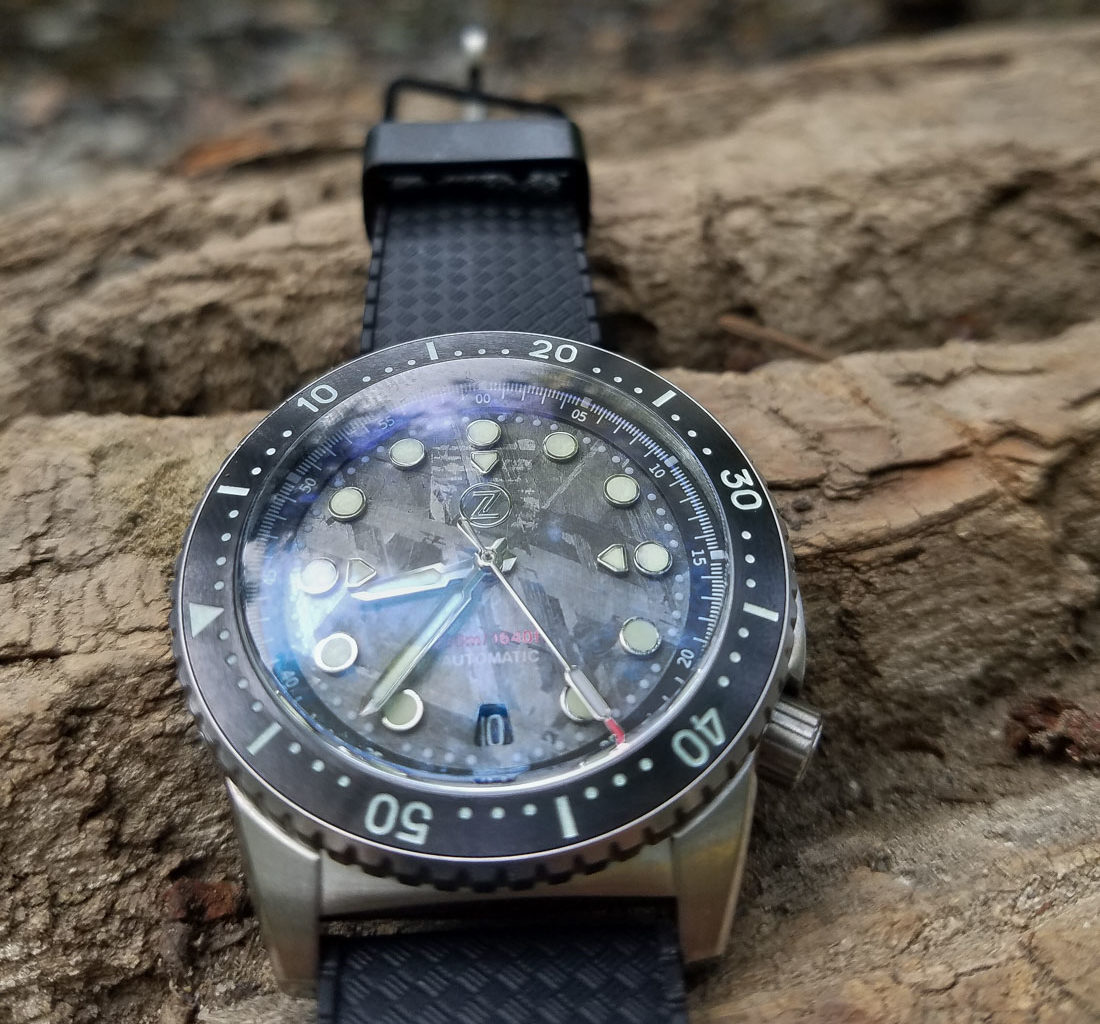
Recently (cosmologically speaking, one million years ago was basically yesterday), one such asteroid slingshot across the universe, making its way almost one billion kilometers to eventually barrel through our atmosphere. Passing over the heads of our hominid forebears, a fragment of the iron core of an early planetoid entered our atmosphere at a speed between 11-72 km/sec, flaming through the sky and slamming into the earth near the border of Sweden and Finland, 140km north of the Arctic circle. There it sat for a thousand millennia until its discovery in 1906. Known as the Muonionalusta meteorite, it is the oldest known meteorite discovered on earth. Pieces are on display in museums and galleries across the globe. And I am looking at a slice of it on my wrist.
Please forgive me for nerding out on the subject, but the meteorite dial is absolutely the coolest thing about this watch. If you have any interest at all in space (or just looking out at the stars during a summer camping trip and wondering what’s out there in the universe), you won’t be able to keep your eyes off the dial. Each time the light hits, different patterns are revealed, creating a dynamic and captivating experience. On a practical level, the meteorite works extremely well on the dial. It’s a rich silvery grey that is interesting, but not distracting or overwhelmingly complicated. I love it.
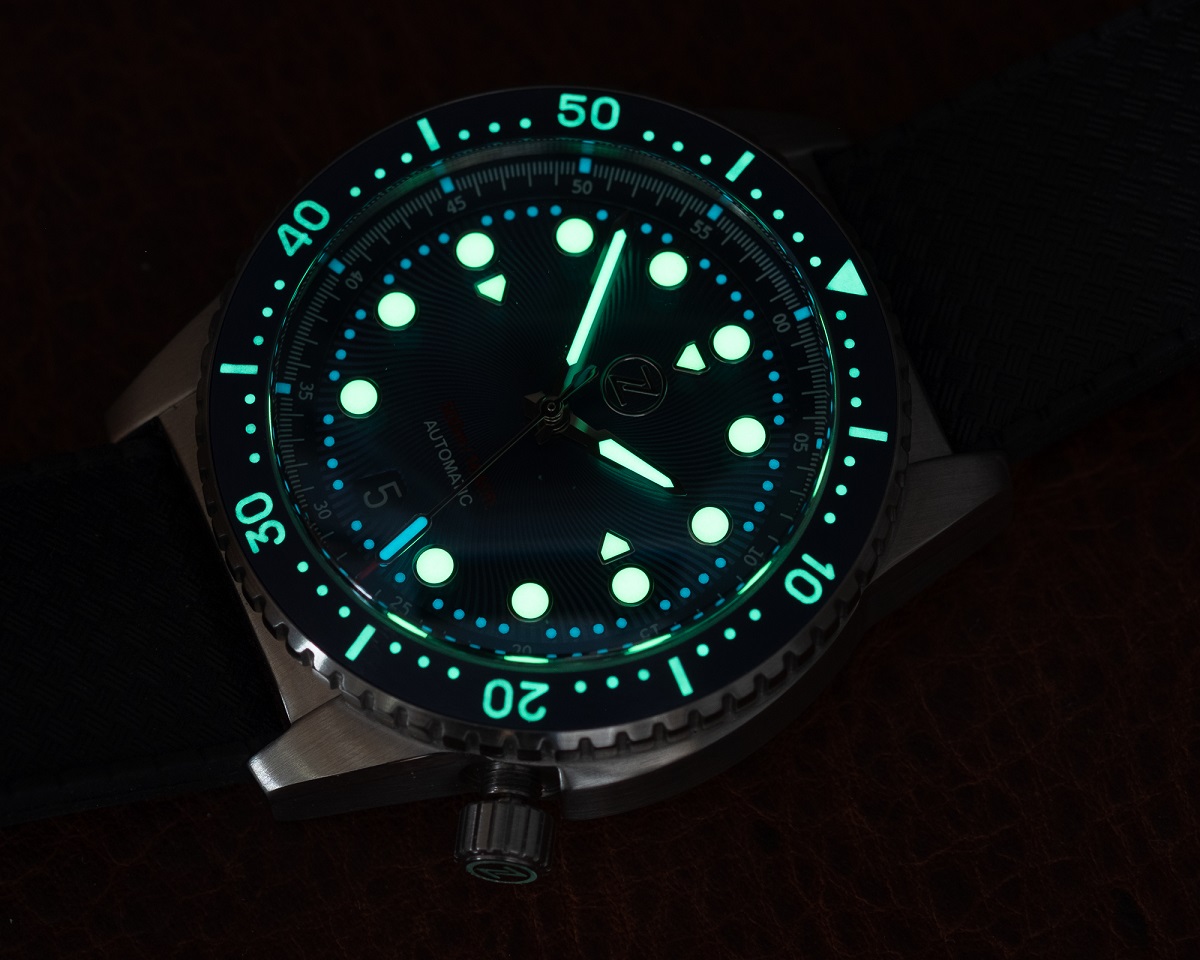 Above lume shot from a previous review of a similar model
Above lume shot from a previous review of a similar model
Sitting atop the meteorite dial are circular, applied markers filled with generous amounts of C3 lume. Admittedly, a brighter white C1 may have added a touch more visual distinctness to the markers, but that’s a personal preference. At 9, 12, and 3 there are additional triangular-ish markers (somewhat like home plate in baseball). This is an example of photos not doing justice to a design. I admit, I wasn’t too keen on the additional markers in photos of the watch, but wearing it, the additional markers add visual distinctness and feel like the right design decision. There are additional lume dots between each 5 minute marker, which are a bit superfluous, but do not detract from the watch when it’s on the wrist and do look pretty cool in the dark.

